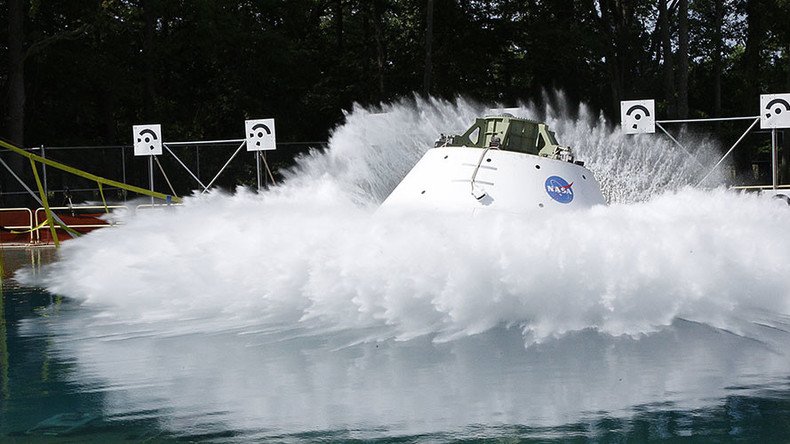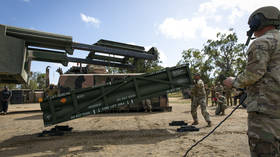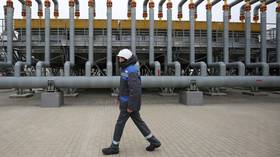One step closer to Mars: NASA completes splashdown test for red planet-bound Orion (VIDEO)

NASA has completed an important step in its quest to send a manned mission to Mars and back, by simulating a water landing with a model Orion spacecraft. The test was carried out to assess the impact on the module and how it would affect a crew on board.
Suspended from a giant pendulum at NASA’s Langley Research Center in Virginia, the mock spacecraft was dropped into a pool of water, with the splashdown being greeted by cheers from the small crowd that had gathered to observe.
“A water landing is not a trivial event at all,” said project chief engineer Jim Corliss, NASA’s website reported. “With these tests, we’re helping to protect the crew.”
He added that the water test is of particular importance because the forces that hit the craft during splashdown determine more than half the design of the structure of the module, which is vital for the safety of the astronauts.
The test took place in a specially constructed pool, known as the Hydro Impact Basin, which Lara Kearney, the manager of the Orion Crew and Service Module Office at NASA’s Johnson Space Center in Houston, described as “a one-of-a kind facility.”
“Over the course of this test series, the test article and the facility have performed nearly flawlessly,” Kearney said. “I’m very proud of the team.”
Splash! In case you missed it, here's the @NASA_Orion water landing again: https://t.co/dKFKA4YckBpic.twitter.com/LWIY47AUcj
— NASA (@NASA) August 25, 2016
The mock landing took place under the most stressful scenarios possible. All three of the spacecraft’s parachutes had failed, which meant that Orion would approach the water at a much faster speed than planned.
The test at the Langley Research Center had the spacecraft approaching the water at a speed of about 32 kph (20 mph). The normal speed if everything was functioning properly would be 27 kph (17 mph).
“We’re looking at some of the hardest impacts, the ones that could potentially pose the most risk of injury to the crew or damaging the structure,” Corliss said. “That’s what we’ve been doing with these 10 tests.”
Corliss added that the vast majority of tests are done through the help of computer models, but said “we need some physical tests to anchor those models, to make sure they are accurate.”
“We’re really ecstatic about the data we’re getting and encouraged with how well it’s correlating with our computer models.”
Over 500 sensors were used to collect data from the impact, which included information about the amount of stress put on the heatshield and the aluminum cabin. Crash test dummies were also inside the spacecraft in order to test safety designs.
NASA’s Orion program will eventually look to send astronauts into space in 2023. One unmanned flight was conducted in 2014, which saw the spacecraft splashdown in the Pacific Ocean, while another unmanned mission is scheduled for 2018. No date has been set for a future mission to Mars.













